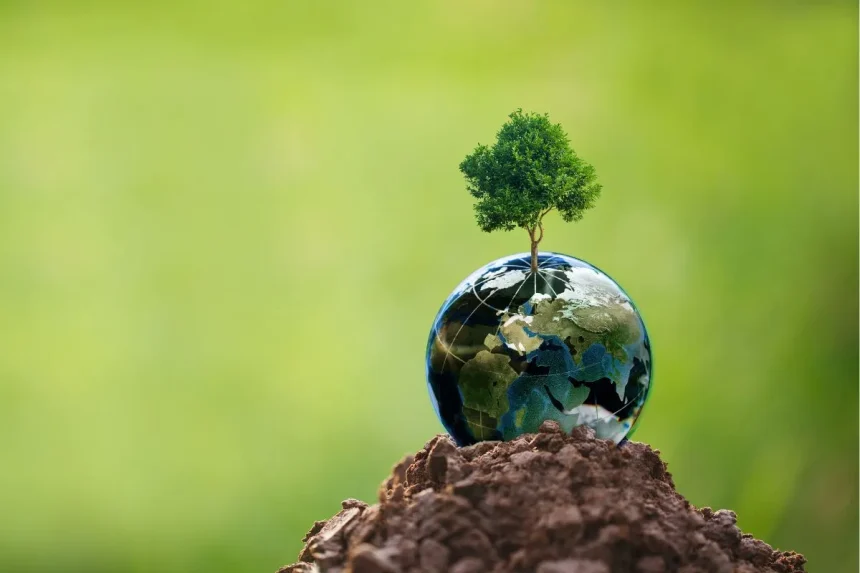Eco-rights are becoming more significant in today’s world. As we face climate change, pollution, and biodiversity loss, it’s clear that nature needs legal protection. Eco-rights aim to give nature, such as forests, rivers, and trees, their rights. This approach helps safeguard our environment for future generations.
What Are Eco-Rights?
Eco-rights refer to the legal rights granted to natural entities. This concept means that elements of nature can have their legal standing. For example, a river can have rights like a person or a corporation. These rights can include the right to exist, flourish, and be restored if damaged.
Why Do We Need Eco-Rights?
Nature is crucial for our survival. It provides us with air, water, food, and shelter. However, human activities often harm the environment. Deforestation, pollution, and overexploitation are common issues. Eco-rights offer a way to protect nature legally. They ensure that nature is preserved and respected.
Historical Background
The idea of eco-rights is not new. Indigenous cultures have long respected nature and its elements. They view nature as a living entity that deserves respect. In recent years, this perspective has gained legal recognition. Countries and communities are starting to grant legal rights to nature.
Examples of Eco-Rights
Several places around the world have embraced eco-rights. These examples highlight the growing acceptance and implementation of eco-rights.
Rivers with Rights
Some rivers have been granted legal rights. The Whanganui River in New Zealand is a prime example. In 2017, it became the first river in the world to be granted legal personhood. This means the river has rights and can be represented in court.
The Ganges and Yamuna rivers in India also have legal rights. These rivers are sacred to millions of people. Granting them legal rights helps protect them from pollution and exploitation.
Forests and Mountains
Forests and mountains can also have legal rights. In Ecuador, the constitution recognizes the rights of nature. This includes forests, rivers, and other ecosystems. Ecuador’s constitution was the first in the world to grant such rights. It ensures that nature can be protected and restored.
In the United States, the Lake Erie Bill of Rights was passed in 2019. This bill grants Lake Erie the right to exist and flourish. It allows citizens to sue on behalf of the lake if it is harmed.
Urban Trees
Even individual trees can have legal rights. The “Tree That Owns Itself” in Athens, Georgia, is a famous example. This white oak tree is said to own the land it stands on. The story, while partly legendary, symbolizes the respect and protection given to this tree.
Benefits of Eco-Rights
Eco-rights offer many benefits. They help preserve natural ecosystems. This preservation is crucial for maintaining biodiversity. Healthy ecosystems provide numerous services, such as clean air and water, soil fertility, and climate regulation.
Protecting Wildlife
Eco-rights also help protect wildlife. Many species are endangered due to habitat loss and pollution. By granting rights to nature, we ensure that habitats are preserved. This protection helps prevent species from becoming extinct.
Ensuring Clean Air and Water
Clean air and water are essential for life. Pollution from industries and agriculture often contaminates these resources. Eco-rights can help prevent this pollution. They ensure that natural entities like rivers and forests are protected from harm.
Promoting Sustainable Development
Eco-rights promote sustainable development. They encourage us to use natural resources responsibly. This approach ensures that we meet our needs without compromising the ability of future generations to meet theirs.
Encouraging Environmental Stewardship
Eco-rights encourage environmental stewardship. They remind us that we are part of nature. This awareness fosters a sense of responsibility to protect and preserve our environment.
Eco-Rights in Action
Eco-rights are being implemented in various ways around the world. These actions demonstrate the practical application and impact of eco-rights.
National and Local Laws
Countries are adopting eco-rights laws. Ecuador’s constitution is a leading example. It recognizes the rights of nature and ensures their protection. Bolivia has also passed laws granting rights to nature.
Local communities are also taking action. The city of Toledo, Ohio, passed the Lake Erie Bill of Rights. This local law grants legal rights to Lake Erie. It allows citizens to take legal action to protect the lake.
Legal Cases
Several legal cases have highlighted the importance of eco-rights. In New Zealand, the Whanganui River case set a precedent. The river was granted legal personhood, ensuring its protection.
In India, the Ganges and Yamuna rivers were granted legal rights. This decision was influenced by the need to protect these sacred rivers from pollution.
Community Role in Eco-Rights
Communities play a crucial role in promoting eco-rights. Grassroots movements often lead the way in advocating for these rights. Local initiatives help raise awareness and support for eco-rights.
Educational Programs
Education is vital for promoting eco-rights. Schools and universities can teach students about the importance of nature. Educational programs can also highlight the concept of eco-rights and their benefits.
How Can You Help?
Everyone can contribute to the eco-rights movement. Here are some ways you can help protect nature.
Support Eco-Rights Laws
Support laws that grant rights to nature. You can do this by contacting your local representatives. Express your support for eco-rights legislation. Your voice can make a difference.
Join Environmental Groups
Join environmental groups that advocate for eco-rights. These groups often work on the ground to protect nature. They also raise awareness and lobby for legal changes.
Spread Awareness
Spread awareness about eco-rights. Talk to your friends and family about the importance of nature. Use social media to share information and support eco-rights initiatives.
Volunteer for Conservation Projects
Volunteer for conservation projects in your community. These projects often focus on protecting local ecosystems. Your efforts can help preserve nature and promote eco-rights.
Reduce Your Environmental Impact
Reduce your environmental impact in daily life. Use less plastic, recycle, and conserve water. Every small action counts towards protecting nature.
Conclusion
Eco-rights are a growing movement. They represent a new way of thinking about nature. By granting legal rights to natural entities, we can better protect our environment. Eco-rights help preserve ecosystems, protect wildlife, and ensure clean air and water.
Supporting eco-rights is crucial for a sustainable future. Everyone can contribute to this movement. Whether through supporting laws, joining groups, or spreading awareness, your actions matter. Together, we can ensure that nature is respected and protected for generations to come.
The journey of eco-rights is just beginning. As more people recognize the importance of nature, the movement will continue to grow. Let us all be part of this journey and work towards a better, more sustainable future.
Get More Info: https://www.timelinetale.com/







